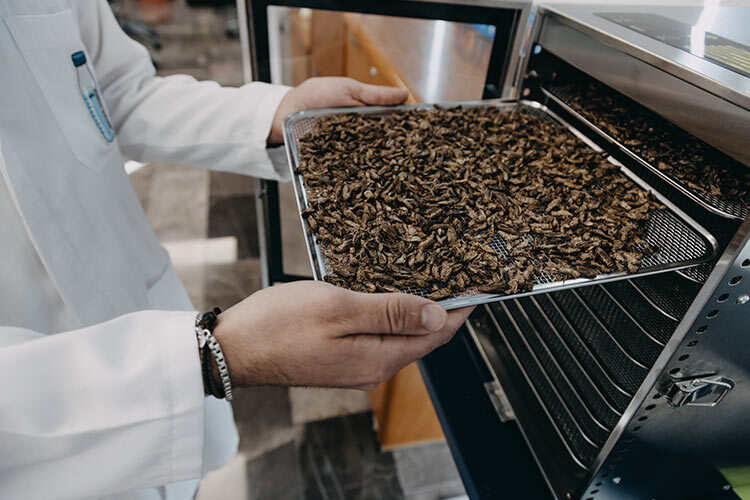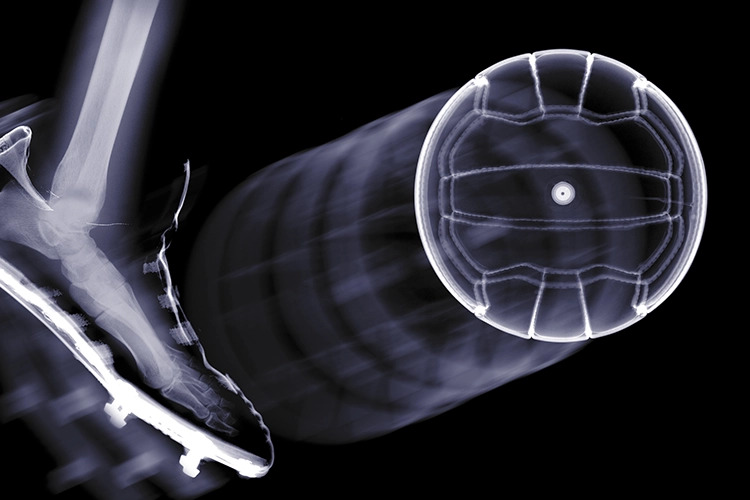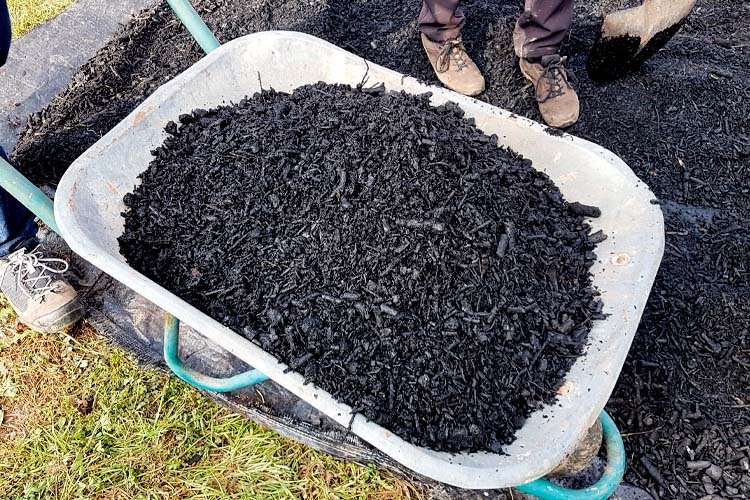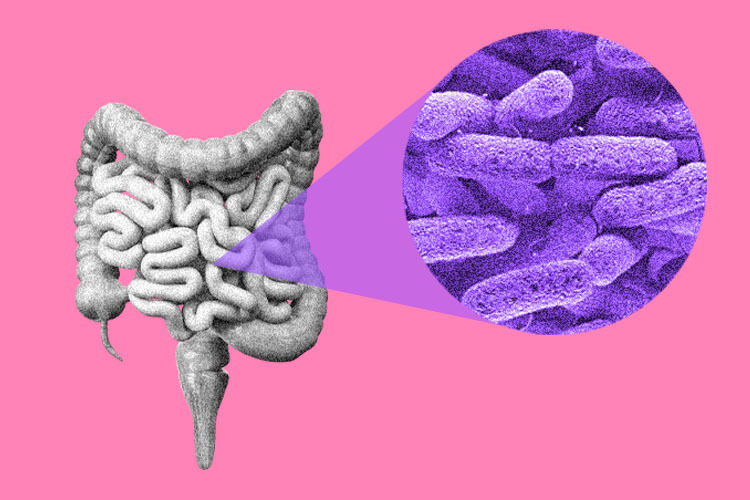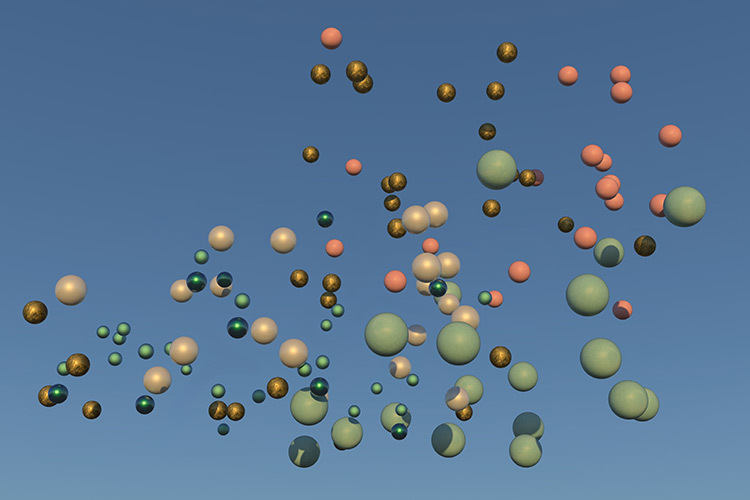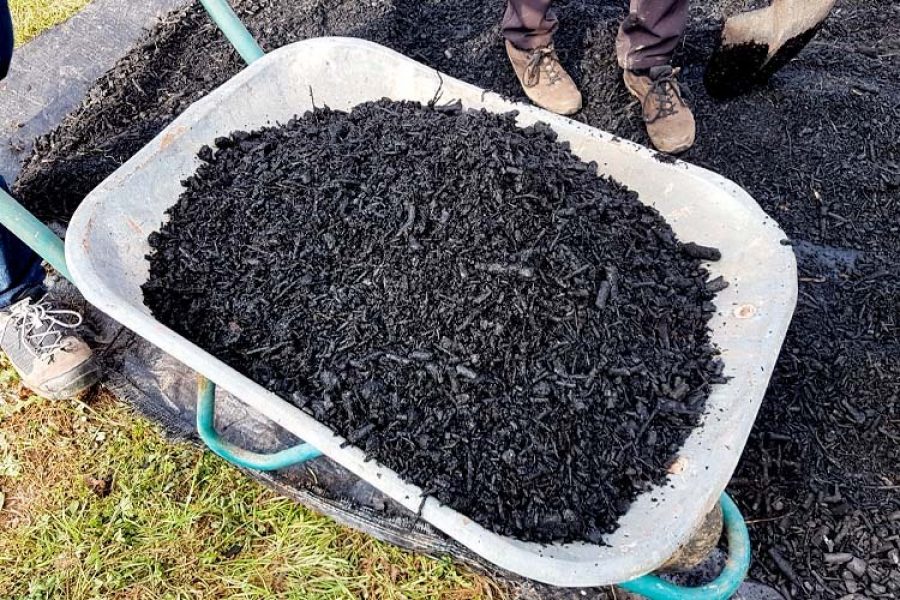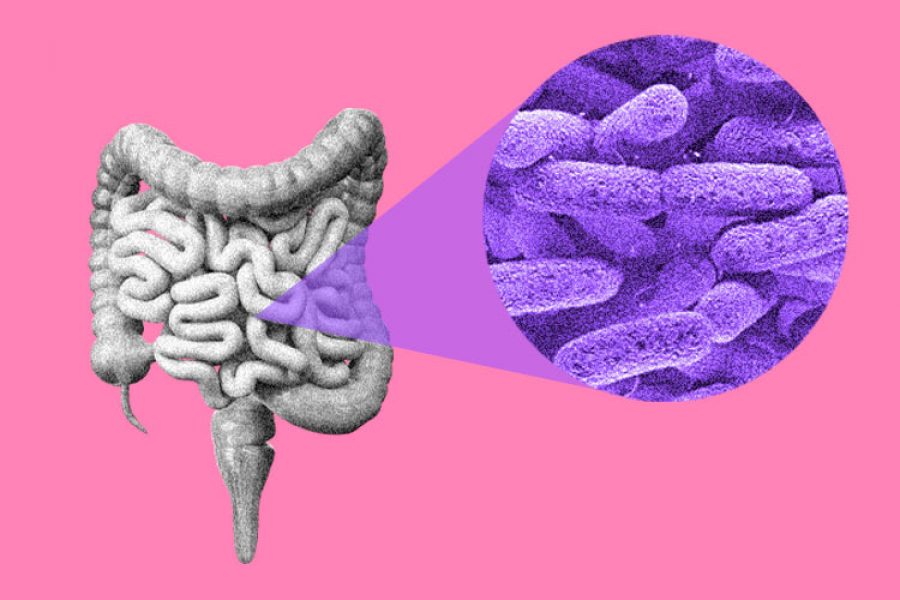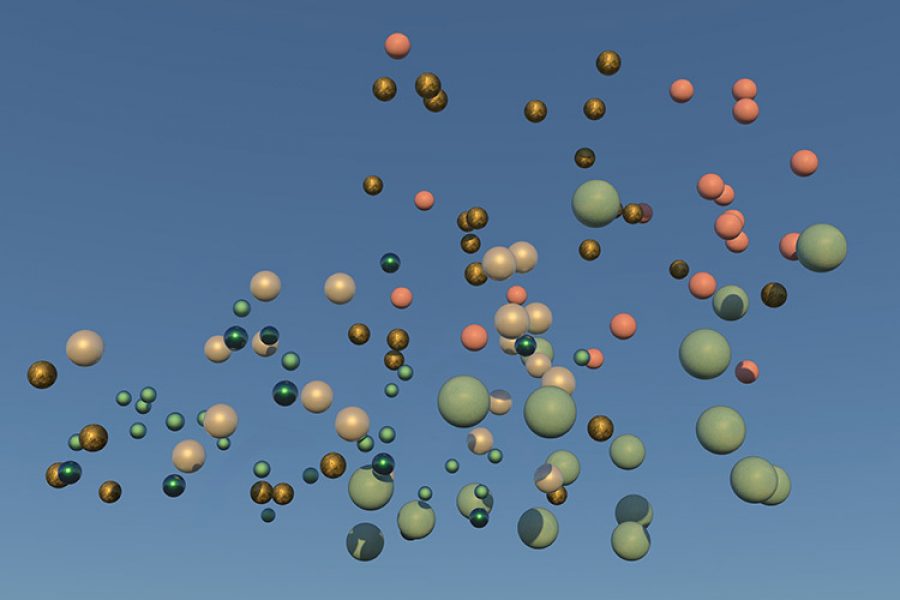By Edgar Santiago Bottle Villalobos*
Imagine a world where your everyday snack or the slice of bread you enjoy with your dinner is not just delicious but also packed with an extraordinary source of nutrition. This is not a tale from a distant future, but a reality being shaped today by the innovative use of edible insects. Yes, you heard it right — insects!
This isn’t just any bread; it’s a blend of tradition and innovation, baked with cricket and mealworm meals. This breakthrough research transforms the everyday staple into a sustainable, protein-rich feast, promising a delicious and eco-friendly twist to your meals.
While the idea may initially seem unappetizing to many, these tiny creatures are nutritional powerhouses. They are rich in proteins, unsaturated fatty acids, and essential micronutrients, making them a formidable alternative to traditional protein sources such as chicken, pork and beef.
Edible insects
Among edible insects, the house cricket and mealworm stand out, not just for their nutritional content but also for their versatility in being transformed into familiar food products, from snacks to pasta, and even into an ingredient that could revolutionize the bread on our tables.
Crickets contain about 63% high-quality protein and 11% dietary fiber mainly from chitin — A carbohydrate macromolecule found in the exoskeletons of arthropods (insects, crustaceans, and arachnids) and the cell walls of fungi, which could benefit your gut health (Bottle et al., 2024; Lopez-Santamarina et al., 2020)—.
Mealworms, on the other hand, contain around 53% protein and 30% fat, rich in essential fatty acids (Bottle et al., 2024) like oleic acid, the primary component of olive oil. When consumed in appropriate amounts, these fatty acids can aid in preventing inflammatory diseases. (Perez-Santaescolastica et al., 2023; Sales-Campos et al., 2013).
As we delve deeper into the potential of these versatile insects, it becomes apparent that their integration into our diets could revolutionize not just the nutritional value of our meals but also the very way we approach food sustainability and security.
However, despite the promising benefits, there remain significant gaps in our understanding. Specifically, concerning how differences in the fat content of insect meals—a vital component in breadmaking—affect various aspects of the breadmaking process, including the amount of water required for dough preparation, proofing times, and the duration needed for dough development.
As well as key quality parameters of the bread, such as protein content, amino acid profile, bread hardness, and shelf life.
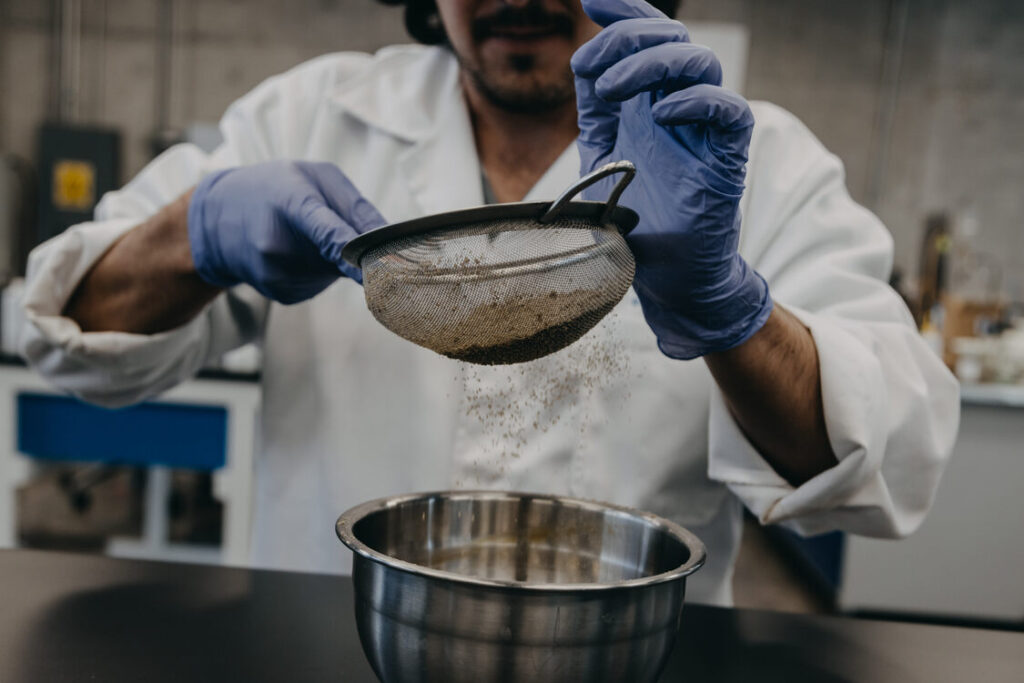
The insect meal process
How adding different types of cricket and mealworm meals (some with all their fat, some with less fat, and some with no fat) to bread would affect the bread’s quality, nutrition, and overall looks?
Starting off, swapping out a bit of wheat flour for cricket or mealworm powder changes how much water the dough needs. This might sound minor, but it’s actually a big deal for getting the texture and consistency just right. And it turns out, whether the insect meal is full-fat or defatted plays a big role in this.
Nutritionally, these insect-enriched loaves not only contain up to 38% more protein than traditional bread, but they also have a better amino acid profile (Bottle et al., 2024). This means the protein is of a higher quality, offering a more complete mix of essential amino acids crucial for the body’s growth and repair.
Such an improvement in both quantity and quality marks a notable advancement in functional foods, addressing common nutritional deficiencies by providing a smarter, healthier dietary option.
Yet, it’s not all about what’s on the inside. Although insect meals didn’t impact how much the dough rose before baking, it did make the baked breads a bit smaller and denser than usual. This happens because the insect meal changes how the dough behaves, affecting its ability to stretch and hold air. Interestingly, full fat meals had better results in keeping the bread’s volume and texture closer to traditional bread.
Finally, breads with cricket and mealworm meal were softer, but they got significantly harder by the fifth day. Bread with mealworm fat kept its softness a bit longer, which might be because the fat acts like a natural softener, slowing down the bread’s hardening process.
This is important because it suggests that fat from insects could play a role in making breads last longer, by keeping them softer and more enjoyable to eat over time.
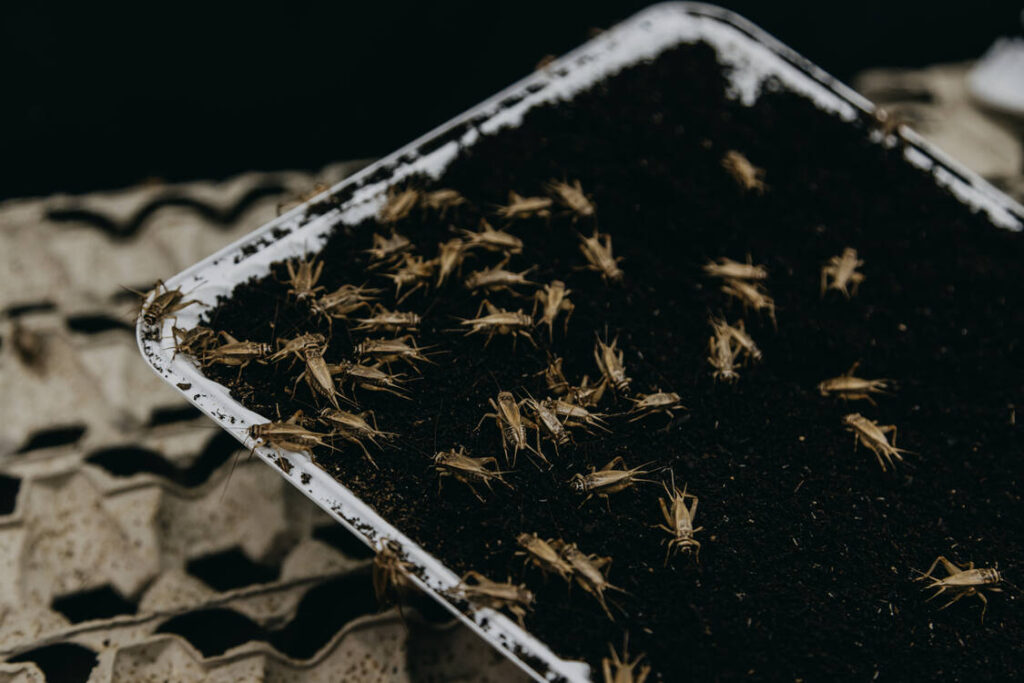
Wheat vs bugs
The exploration into incorporating cricket and mealworm meals into bread represents a pioneering step towards redefining our dietary landscape.
Partially replacing wheat flour with insect-based ingredients into various food products such as snacks, pasta, baked goods, and cereals offers a sustainable alternative to traditional protein. Transitioning to insect protein from conventional animal sources in our daily diets has the potential to significantly lower our environmental impact.
This shift could result in up to an 80% reduction in carbon footprint, water consumption, and land use associated with food production, making it a viable solution for addressing global sustainability challenges (Mazac et al., 2022).
This innovative approach not only offers a method to enhance the nutritional profile of our daily bread but also points towards a sustainable solution to global food security challenges. The findings from this research invite us to reconsider our preconceived notions about food sources, demonstrating that edible insects hold significant potential for nutritional improvement and environmental sustainability.
Reference
- Bottle, E., Espinosa-Ramírez, J., Serna-Saldívar, S. O., & Tejada-Ortigoza, V. (2024).
- Effect of full fat and defatted insect meals in breadmaking quality. LWT, 191, 115602.
- Lopez-Santamarina, A., Mondragon, A. d. C., Lamas, A., Miranda, J. M., Franco, C. M., & Cepeda, A. (2020). Animal-Origin Prebiotics Based on Chitin: An Alternative for the Future? A Critical Review. Foods, 9(6), 782.
- Mazac, R., Meinilä, J., Korkalo, L., Järviö, N., Jalava, M., & Tuomisto, H. L. (2022). Incorporation of novel foods in European diets can reduce global warming potential, water use and land use by over 80%. Nature Food, 3(4), 286-293.
- Perez-Santaescolastica, C., de Pril, I., van de Voorde, I., & Fraeye, I. (2023). Fatty Acid and Amino Acid Profiles of Seven Edible Insects: Focus on Lipid Class Composition and Protein Conversion Factors. Foods, 12(22), 4090.
- Sales-Campos, H., Souza, P. R., Peghini, B. C., da Silva, J. S., & Cardoso, C. R. (2013). An overview of the modulatory effects of oleic acid in health and disease. Mini Rev Med Chem, 13(2), 201-210.
Author
*Edgar Santiago Bottle Villalobos. PhD candidate in Biotechnology, with a keen interest in food innovation and alternative proteins in BioFoods Research Lab at Tecnológico de Monterrey. He has co-founded a startup centered on insect-based foods, successfully launching over five products into the market. Additionally, Edgar is a passionate advocate for science communication, engaging a broad audience through his social media platform, which boasts over 100,000 followers. He is being supervised by Viridiana Tejada-Ortigoza and co-supervised by Johanan Espinosa-Ramírez.
